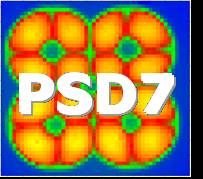Speaker
Dr
Jon Lapington
(Space Research Centre, University of Leicester)
Description
Simulation of detector operation can be a valuable tool in optimizing
design before recourse to cutting metal, and if successful, can
significantly reduce the requirement for design iteration. This paper
describes this process as applied to the reduction of spatial non-
linearities in electronic charge division readout devices.
Several theoretical analyses of the non-linearities expected such
devices in have been previously undertaken, however all suffer from
the inability to analyze the perimeter pattern areas where the
electrode geometry does not bear simple analytical description. We
present a technique whereby an arbitrary radial charge footprint may
convolved with any electrode structure which can be defined as a
closed polygon, to calculate total charge deposited on the electrode.
This technique can be used for electronic charge division image
readouts to accurately determine the effect of arbitrary electrode
perimeter designs; the major cause of non-linearity in these devices.
We present measurements of readout non-linearity both from pattern
simulations and from manufactured readout patterns used in an
operational microchannel plate detector, and use comparison to
demonstrate the validity of this convolution technique. We describe
a computer procedure whereby the linearity measurements from real
image data may be obtained automatically by looking for correlation
between a predefined kernel obtained from the image, and representing
repetitive elements within the image data.
We demonstrate how the design of the electrode perimeter is crucial
in the mitigation of readout non-linearity and present results from
designs optimized using this simulation technique. We discuss the
degree of improvement gained using this method and suggest areas
where simulation prior to manufacture may be used to good effect.
Primary author
Dr
Jon Lapington
(Space Research Centre, University of Leicester)




